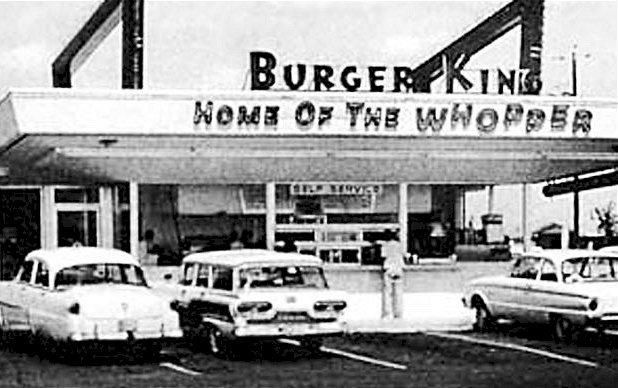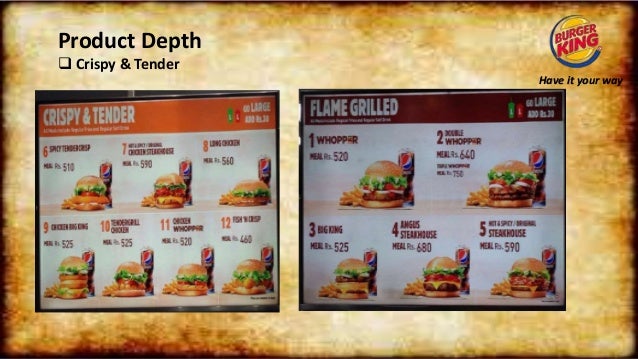Franchise Land Stories: The Burger King Story
Burger King, the second-largest fast food hamburger business in the world, has gained the loyalty of its customers to rank among the most popular fast food chains globally. Nearly all BURGER KING® restaurants are owned and operated by independent franchisees, the majority of which are long-standing family enterprises.
A look back in time:

Keith J. Cramer and his stepfather Matthew Burns thought of franchising after thinking of McDonald’s. After buying two “Insta” machines, they both started their first store using the cooking gadget Insta-Broiler. The strategy worked, so all of the other franchisees later followed suit.
James McLamore and David R. Edgerton, two Miami, Florida, franchisees, chose to purchase the company while it was in jeopardy in 1959. For eight years, they successfully opened their outlets at roughly 250 locations across the nation while running the company under the new brand of Burger King. In 1967, they offered the company for sale to Pillsbury Company.
The Pillsbury Company made numerous attempts to restructure and reorganise the company. As part of one of the year’s most significant measures to assist the company get back on track, it hired Donald N. Smith, a former McDonald’s executive. Updated franchise agreements, new shop designs, expanded menus, and other endeavours to standardise the company’s look and feel were among the additional projects. While a few of the adjustments were successful, the most were dropped since they had little to no beneficial influence on the growth and development of the company.
In the end, it proved difficult for the company to keep the budget deficit under control and recover from the financial loss. It was taken up by Grand Metropolitan, a British entertainment giant, in 1989, and subsequently Diageo acquired over. However, neither one of them was able to stop the upward financial slope.
In 2002, the company was purchased for US$1.5 billion by a group of investment firms led by TPG Capital. It helped with the planning and implementation of the business’ structural improvements.
TPG and its partners announced in September 2010 that they will sell their 31% ownership in Burger King to another private equity group, 3G Capital, for US$24 per share, or $3.26 billion. Throughout the 2007–2010 financial crisis, the company consistently lost money, unlike its competitor McDonald’s.
Burger King has expanded since establishing its partnership with the Tim Hortons restaurant and coffee business in August 2014.
Products:

The original place’s menu consisted mostly of plain hamburgers, French fries, soft drinks, milkshakes, and desserts. When the Whopper sandwich was introduced in 1957, it garnered popularity right away and is today thought of as being synonymous with the brand name of the business. Numerous new product lines, including non-hamburger sandwich lines, morning food lines, and “oeAm Express” product lines, were introduced over the course of several decades. Since a few years ago, sandwiches made with Swiss cheese and mushrooms as well as the Texas Double Whopper have come and gone from the menu.
As the business grew outside of the US, it localised its menus to account for the diverse regional preferences and religious customs. For example, teriyaki, the Whopper with beetroot and a fried egg, and halal or kosher products in Israel and the Middle East.
It occasionally launched limited time offers (LTOs) to differentiate themselves from Wendy’s, its primary competition. These goods either had a long- or short-term sales focus and were either new or updated versions of the company’s standard offerings.
Philanthropy:

Two well-known internal national philanthropic programmes and organisations that Burger King is known for are the US-based Have It Your Way Foundation and the McLamore Foundation. Through college scholarship programmes, the former aims to combat poverty, prevent disease, and advance community education while the latter wants to provide scholarships to students in the US and its territories.
Franchise owners all over the world are also linked to a number of philanthropic organisations that support research into and care for conditions including paediatric cancer. The Jimmy Fund, a philanthropic organisation in the United States, and the Boston Red Sox of Major League Baseball are connected to the BK. The organisation distributes $1 scratch-off lottery tickets as part of their contest in Boston. Each card produces a winning prize, which is normally some sort of food or drink but may also—and this is rarer—include excursions or shopping sprees. These tournaments help hospitals like the Dana-Farber Cancer Institute fundraise. The organisation in Nebraska is also linked with the “BK Beat Cancer for Kids” initiative at the UNMC Eppley Cancer Center at the University of Nebraska Medical Center in Omaha.
